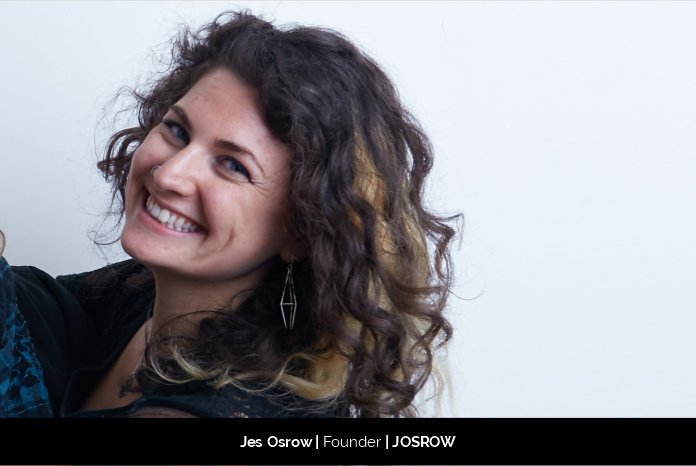Invisible Disabilities: Women in the Workforce
The 10 Most Promising Business Leaders to Follow in 2022

Research was performed during the fall of
2017 by Jes Osrow, an HR professional with a focus on Diversity and
Inclusion. She is an expert in coaching, mentoring and tech recruitment and has
worked her entire career with two Invisible Disabilities (ID): depression and
anxiety.
The goal is to expand the pool of input
from professional women who are forging forward with their successful, albeit
challenged, careers while managing their IDs. The primary step for individuals
is to self-identify their ID (though most will not have used this term and many
may not have yet seen themselves as part of this group).
Invisible Disabilities: What Does the
Research Tell Us?
Invisible Disabilities have been explored
by researchers on a limited basis with literature reviews in psychology,
medicine, education, business and other areas revealing scarce study and
insight. Matthews & Harrington (2000) defined IDs as. “…both
mental and physical conditions that are not immediately noticeable by an
observer…” (p. 405). Regarding IDs in the workplace, as recently
as 2014, Santuzzi, Waltz, Finkelstein & Rupp noted that, “Workers
with IDs encounter unique challenges compared to [all] workers…and even workers
with visible disabilities.” (Abstract)
Educational institutions have been most
active in supporting students with disabilities in an effort to enhance success
in various settings. Still, IDs are rarely mentioned and akin to many learning
disabilities, remain the responsibility of the afflicted person. They are
challenged to communicate with staff in environments like Disability Offices in
higher education or to the workplace HR. According to the CDC “In
2014 [it was] found that 27.4% of women ages 18–64 identified with a disability
in some form (compared to 20.8% of men in the same age range).” While
the rest of society has visible cues to indicate (some) disabilities, there is
a large faction (sometimes estimated as high as 74% of all disabilities) that
are unseen. These IDs are a compelling subject that necessitates study. Limited
research, or even professional conversation about IDs, suggests possible
challenges in awareness of their existence, understanding of the demographics
and implications for both the workforce and workplace.
Invisible Disabilities Today
One industry struggling publicly with
issues of D&I is the tech industry. In 2017, Jes Osrow submitted a proposal
to speak about preliminary research on IDs at the Anita Borg Institute
Grace Hopper Conference (the pre-eminent conference for women in tech).
While the anonymous reviewers of the proposal had positive comments, their main
constructive feedback was:
“Before reading this submission, I
was not familiar with the term ID and would guess other attendees would also
need more insight into what it is and more details on the mental illnesses that
might be considered IDs.”
A complete lack of awareness and
understanding of the term “ID” indicates challenges present among reviewers
(highly placed and experienced women in tech) in understanding the definition,
reach and workplace implications of women in the tech industry. These comments
reveals a glaring need to expand the conversation and the need for current
research into this topic. The research conducted focused on women in business
but is not solely applicable to the industry; working women in all industries
are affected by the challenges of IDs.
Invisible Disabilities & Working
Women: Qualitative Research 2017
Challenged by her own IDs, Jes Osrow began
with the goal of more clearly defining the issue of IDs among working women.
She created and administered a survey reviewed by experts in education and
market research fields. The survey was then distributed through a network of
professional women via networks like Dreamers & Doers, Tech Ladies, WIT
PDX, and other communities. It quickly became clear there were gaps in
understanding about the breadth and depth of IDs among women previously or
currently in the workplace. The goal was to collect data on 100 participants.
The response was swift and overwhelming
with 102 comprehensive survey submissions within five weeks. The survey
collected data on the demographic areas of age, gender identity, sexual
orientation, industry with commentary about their IDs and work situations. The
authors intend to publish the findings and data collected in multiple articles
to help move the conversation forward and implement change.
Invisible Disabilities among Working
Women: Demographics
Data from the 102 respondents the average
age is 35 years old within the range 18–53 years. All women were working either
full or part-time and many were entrepreneurs. Data indicated seven clear
career areas with positions in technology being noted as the predominant
industry represented.
Most respondents noted they were working
with one or more health care providers for both diagnosis and intervention
regarding their ID. Some also noted self-diagnosis, treatment and ongoing
self-management. Despite self-awareness of IDs, the main area of concern
responsibility in terms of disclosure with employers and coworkers. Thoughts
were shared around stigma, shame, and possible changes in work expectations and
trajectory. These matters echoed previous research (2014, Santuzzi, Waltz,
Finkelstein & Rupp) noting that, “…current legislation and policies
might not be sensitive to the unique experiences and disclosure decisions faced
by workers with IDs”(Abstract).
The article is originally written by Jes
Osrow, Casey Sweet, and Pamela Smith EDD, LD, RD on medium.com and is
republished with the author’s permission.














